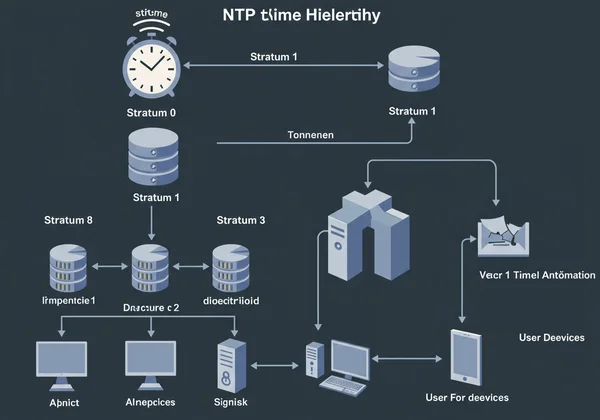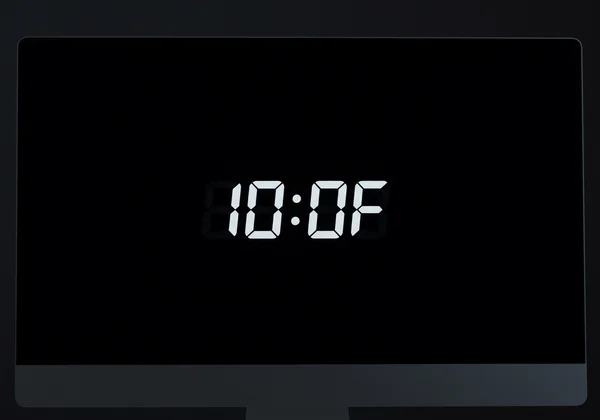FullScreen Digital Lock Screen Clock: How NTP Ensures Perfect Accuracy
In our fast-paced world, we rely on digital clocks for everything from international meetings to catching a live event. But have you ever truly considered the incredible precision behind the online digital clock you see? Its unwavering accuracy isn't just a convenience; it's a profound marvel of modern technology, ensuring our digital lives stay perfectly synchronized.
This article pulls back the curtain on the sophisticated engineering that powers a truly reliable live digital clock. We'll explore the core protocol that prevents digital time from drifting into chaos and explain how services like our online digital clock platform commit to delivering precision you can depend on, right down to the last second.

Demystifying Time Sync: What is Network Time Protocol (NTP)?
At the heart of global time synchronization lies a powerful yet unsung hero: the Network Time Protocol (NTP). To understand its importance, you first need to appreciate the inherent flaw in nearly every computer clock. Left to their own devices, the internal quartz crystal oscillators in computers are imperfect. They can gain or lose seconds every single day due to temperature fluctuations and manufacturing variations. While a few seconds might not matter for casual use, it’s a critical failure for systems that demand precision.
The Core Challenge: Keeping Digital Clocks Working in Perfect Sync
Imagine trying to coordinate a rocket launch where every computer has a slightly different time. The potential for disaster is immense. This is the fundamental problem NTP was designed to solve. It’s a protocol, or a set of rules, that allows computers on a network to continuously correct their internal clocks by referencing a common, highly accurate time source. Without it, the internet as we know it—from secure financial transactions to coordinated server operations—simply couldn't function. This constant correction is what allows a high-quality online digital clock to display the correct time, consistently and universally.
From Atomic Clocks to Your Screen: Understanding the NTP Hierarchy (Stratum Levels)
NTP doesn't just pull a random time from the internet. It operates on a hierarchical system of sources, known as "stratum levels," to ensure the highest degree of precision.
- Stratum 0: These are the grandmasters of time—ultra-precise atomic clocks, cesium clocks, or GPS clocks. They are the primary reference sources but are not directly connected to the internet. They are the ultimate source of Coordinated Universal Time (UTC).
- Stratum 1: These are computer servers directly connected to Stratum 0 devices. They act as the primary time servers for the internet, synchronizing their own clocks with atomic precision and passing that time down the hierarchy.
- Stratum 2: These servers connect to Stratum 1 servers. They, in turn, provide time to thousands of other devices.
- Stratum 3 and Beyond: The hierarchy continues, with each level connecting to the one above it. Your computer, or the server running an online clock like ours, typically synchronizes with multiple Stratum 2 or 3 servers.
This tiered system creates a robust and fault-tolerant network. By cross-referencing several time sources, NTP algorithms can discard any faulty readings and calculate the precise time with astonishing accuracy, often within a few milliseconds of UTC.

Beyond NTP: Ensuring Unwavering Online Clock Accuracy
While NTP is the backbone of time synchronization, it's not the only factor that determines the accuracy of the clock you see on your screen. Delivering a truly reliable realtime digital clock requires a holistic approach that accounts for other potential points of failure. As a tech expert, I know that implementation details matter just as much as the underlying protocol.
The Unseen Influences: Server Reliability & Internet Latency's Role
Two critical, often overlooked, factors play a major role in what you experience:
-
Server Reliability: The server hosting the online clock application must be impeccably maintained. It needs to be constantly synchronized with high-stratum NTP servers. If the host server's own clock is inaccurate, it doesn't matter how good the protocol is—it will serve incorrect time to its users. A commitment to high-uptime, professionally managed infrastructure is non-negotiable for a trustworthy time service.
-
Internet Latency: This is the delay it takes for data to travel from the time server to your computer screen. Even at the speed of light, this journey isn't instantaneous. Sophisticated online clock applications must intelligently calculate and compensate for this round-trip delay to ensure the time displayed on your screen is a true reflection of the current moment, not the moment a fraction of a second ago.

Our Commitment: Providing the Most Accurate Online Clock
This is where a dedicated service like our fullscreen digital clock truly shines. It’s not just about displaying numbers on a screen; it’s about a deep commitment to precision. By leveraging a robust network of reliable NTP servers and implementing intelligent latency compensation, the platform ensures the time you see is consistently accurate and trustworthy.
Whether you're using it as a fullscreen clock for studying, a large display for a presentation, or a multi-timezone dashboard for your remote team, you can be confident that the time is perfect. This dedication to technical excellence is what transforms a simple tool into an indispensable utility. Ready to experience this unparalleled precision? Try our free, customizable digital clock today and transform how you track time!
Trusting Every Tick: The Precision Behind Your Online Digital Clock Experience
The journey from an atomic clock's vibration to the pixels on your display is a testament to incredible technological coordination. The accuracy of a modern online digital clock is not an accident; it is the result of a carefully designed global system built on the Network Time Protocol. This system works silently in the background, ensuring that our digital world stays in perfect rhythm.
By understanding the roles of NTP, server reliability, and latency compensation, you can better appreciate the value of a high-quality timekeeping tool. Our customizable digital clock is more than just a sleek interface; it's a service built on a foundation of precision and trust.
Ready to put this technology to use? Transform your device into a powerful time management tool and explore the features now.

Common Questions About Online Clock Accuracy
What is the most accurate online clock I can rely on?
The most accurate online clock is one that properly utilizes the Network Time Protocol (NTP) to synchronize with atomic time sources and actively compensates for network latency. Our service is designed with these principles at its core, making it an exceptionally reliable choice for anyone needing a customizable desktop clock with pinpoint accuracy.
How do online digital clocks actually work to stay synchronized globally?
Online digital clocks work by having their host servers constantly communicate with a network of NTP servers. These servers are arranged in a hierarchy (stratum levels) leading back to highly precise atomic clocks. This ensures that no matter where you are in the world, the clock is referencing the same universal time standard (UTC) and adjusting for your local time zone.
Can my internet connection speed affect how accurate an online clock appears?
Yes, to a small degree. A very slow or unstable internet connection can increase latency, which is the delay in data transfer. However, well-designed online clocks like our high-precision tool use algorithms to measure and compensate for this latency, minimizing its impact and ensuring the time displayed remains highly accurate.
When were digital clocks invented, and how has their accuracy evolved?
The first digital clock, the Platron, was invented in 1956 by D.E. Protzmann. Early consumer digital clocks from the 1970s relied on the frequency of the AC power line or simple quartz crystals, which were prone to drift. The advent of the internet and NTP revolutionized accuracy, allowing digital clocks to move from being "mostly right" to achieving synchronization with atomic clocks, representing an incredible leap in precision.